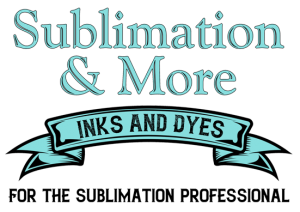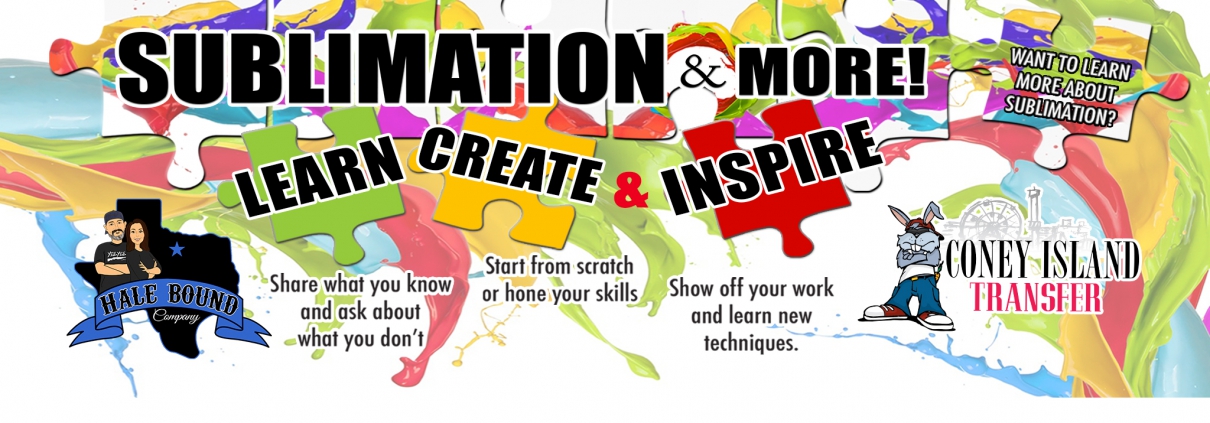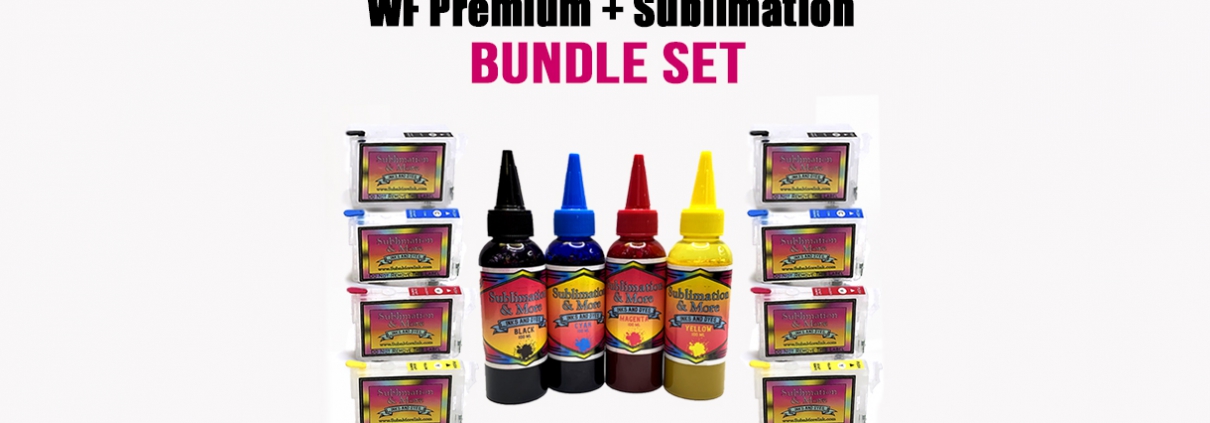We are frequently asked which software is best for sublimation. If you don’t know, there are two basic types of design software, vector and raster (or bitmap). Vector is what’s used for cutters or plotters. A vector design is made up of mathematical formulae that define the points, curves, angles, etc. of each design. Because of that, it can be resized without loss of resolution. But also because of that, pure vector does not do continuous blends and color transitions. Vectors of photographs look more like cartoons. A raster, or bitmap, image is best equated to a photograph. A photo is a raster image. It’s made up of dots in a grid. As you increase the size, the dots move further apart. That’s what reduces the quality of the image when you resize. The software will interpolate the missing data, but the guessing creates fuzziness.
Which Type of Software is Best?
For the general creation of designs for sublimation I think that vector software is preferable. I know many people jump to PhotoShop, and it’s a great program. But it’s a raster edit and photo manipulation program. That doesn’t mean you can’t do other things with it, it’s just not the best choice for the kind of design and layout work most people do for sublimation design. (And if you are also outputting to send to a vinyl cutter it’s a really poor choice.) It makes dealing with text and editing text a more complicated, multistep process than it needs to be, and resizing, changing paper size, and all manner of other things are more complicated. (Again, it can be done, but if you are looking for a new program then there are better choices.)
What about Silhouette Studio?
Because of the popularity of the Silhouette Cameos many people use Silhouette Studio and then transition to it for sublimation. Let me say that I have always liked Silhouette Studio. It’s a surprisingly powerful program which I still use for things like the warp panel (in BE). That said, it is written to support their line of cutters. It is not written to be a full fledged design program for printing. It is not ICC aware, and without ICC profiles it is impossible to get truly accurate color. It also does not have any raster features, so you cannot do effective blends, smudges, smears- things that can enhance a sublimation print.
What Are The Other Options?
Personally I can’t imagine not having both a vector and raster edit program, but if I had to only choose one it would be vector, hands down. Most vector programs have enough raster editing features to get you through, anyway. Photo editing programs do not have strong vector features. So, which is a vector program?
Adobe’s main programs are subscription based. If you are committed to giving Adobe money every month, Adobe Illustrator is the one for you.
If you want to buy a comprehensive suite with everything included – vector, raster, font manager, and a pile of fonts and clip art- I can’t recommend CorelDraw highly enough. I’ve used almost everything and it’s my favorite.
If you’re on a budget or just starting out, or looking for a step up from the bundled program with your vinyl cutter, you can’t go wrong with Affinity Designer. It’s what I recommend to most people because it’s a solid, pro-level program that is ICC and there is no subscription. It’s a flat out $50. In my opinion there is no better deal out there. Affinity also has Photo, which is (surprise) their photo editing and bitmap program. You can find a lot of reviews comparing it favorably to PhotoShop, and there are many videos and tutorials on both programs. Affinity Designer also has a raster module that lets you really up your design abilities.
Are These Programs Easy to Learn?
Whichever program you choose there is going to be a learning curve. You’re going to be irritated and frustrated and complain that it’s too difficult compared to what you’re used to. You’ll master it with time and practice, and once you learn any high end program the others will come easily. I’m a longtime CorelDraw user and it’s my favorite, but put me in front of Illustrator or Designer and I can get work done.
Sublimation & More! Learn, Create, and Inspire is the premiere, the most trusted sublimation group on Facebook. Led by Amy Hale (of Halebound.com) and Stan Reisler (of ConeyIslandTransfer.com), we have helped tens of thousands of crafters learn the art of sublimation. Our respective companies bring the best blanks available to our users at great prices, and our team of Elite Designers helps produce a proven line of products to fill your store with fun and realize your full earning potential. Many people have asked us when we were going to start selling ink. The answer was simple- when we could bring the best product to market. We spent the last year testing numerous inks from multiple countries. We wrote countless profiles and burned through cases of blanks testing them. We are pleased to bring you what we consider to be the finest ink available on the market today, with the most comprehensive set of ICC profiles in the industry: Sublimation & More Inks and Dyes Premium Plus Sublimation Ink. If you’re ready to step up your game, this is the ink that you’ve been looking for.
We’ve been seeing a lot of people selling sublimation ink, claiming that it matches the Epson ink and doesn’t need a profile. There’s an inherent problem with that- sublimation heats the ink to a gaseous form and permanently dyes the substrate. In that process of heating and applying the ink the color shifts. Matching the Epson ink won’t give you accurate color, because the heating process isn’t part of Epson’s calculations. The heart of great sublimation ink is the profiles, and those profiles are based on what the color looks like AFTER it’s applied. Different printers apply the ink differently; different paper coatings absorb and then transfer the ink differently; different substrates accept the ink differently. ICC profiles are supposed to be OS independent; the same profiles should work for Windows and Mac computers. We’ve been working with many Mac users who are finding that other company’s profiles aren’t working on their systems. So what do you do? Write a different profile for every possible combination of the operating system, printer, paper, and substrate? As a matter of fact, yes! That’s exactly what we’ve done. Anthony, our color guru, works with Windows and Mac computers and a bank of printers to develop and refine our profiles to create the best color reproduction possible. Because we won’t settle for less, and we don’t know why you should.
~Anthony Ferrer
If you are setting up a WorkForce printer for the first time you will need the complete kit. Our kit comes with 100 ml bottles of each color (Black, Cyan, Magenta, and Yellow), 2 sets of 252xl cartridges, and syringes to fill the cartridges. We’ve been recommending for years that people have two sets of cartridges, so we put together a kit that has what you need to maximize your workflow.
If you are switching to our ink from another, we also recommend the complete kit. While it’s possible to drain your existing carts and fill them with new ink, starting with fresh cartridges is just good practice.
You can also select just the 100 ml bottles, either as a set or individually. We do NOT recommend mixing our inks with other brands, as that will give you an unpredictable color gamut.
Why two sets of cartridges? The worst thing you can do for your WorkForce printer is run the cartridges dry. Because the chips don’t really keep track of how much ink is in the carts, it’s easy to do that. With two sets of cartridges you are never tempted to see how far you can stretch it before filling the carts- just swap them out for filled ones before starting a big job and, while you’re printing, fill the other set. That way you always have a freshly filled set ready to go.
Our goal is to provide the best possible color output. Period. If you share our obsession with color fidelity it is necessary to print from a program that supports ICC profiles. Please understand that our support starts with the assumption that your software is ICC aware. If it is not (Silhouette Studio, for example, is not), we cannot guarantee accurate color.
~ Anthony Ferrer


